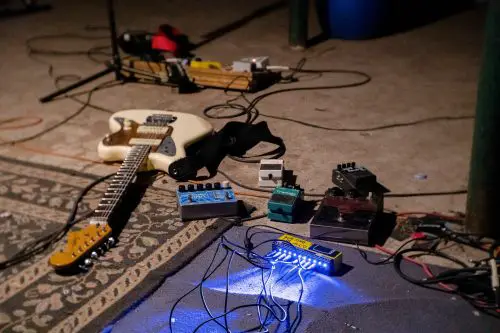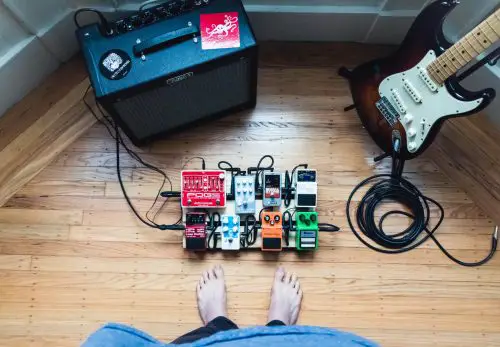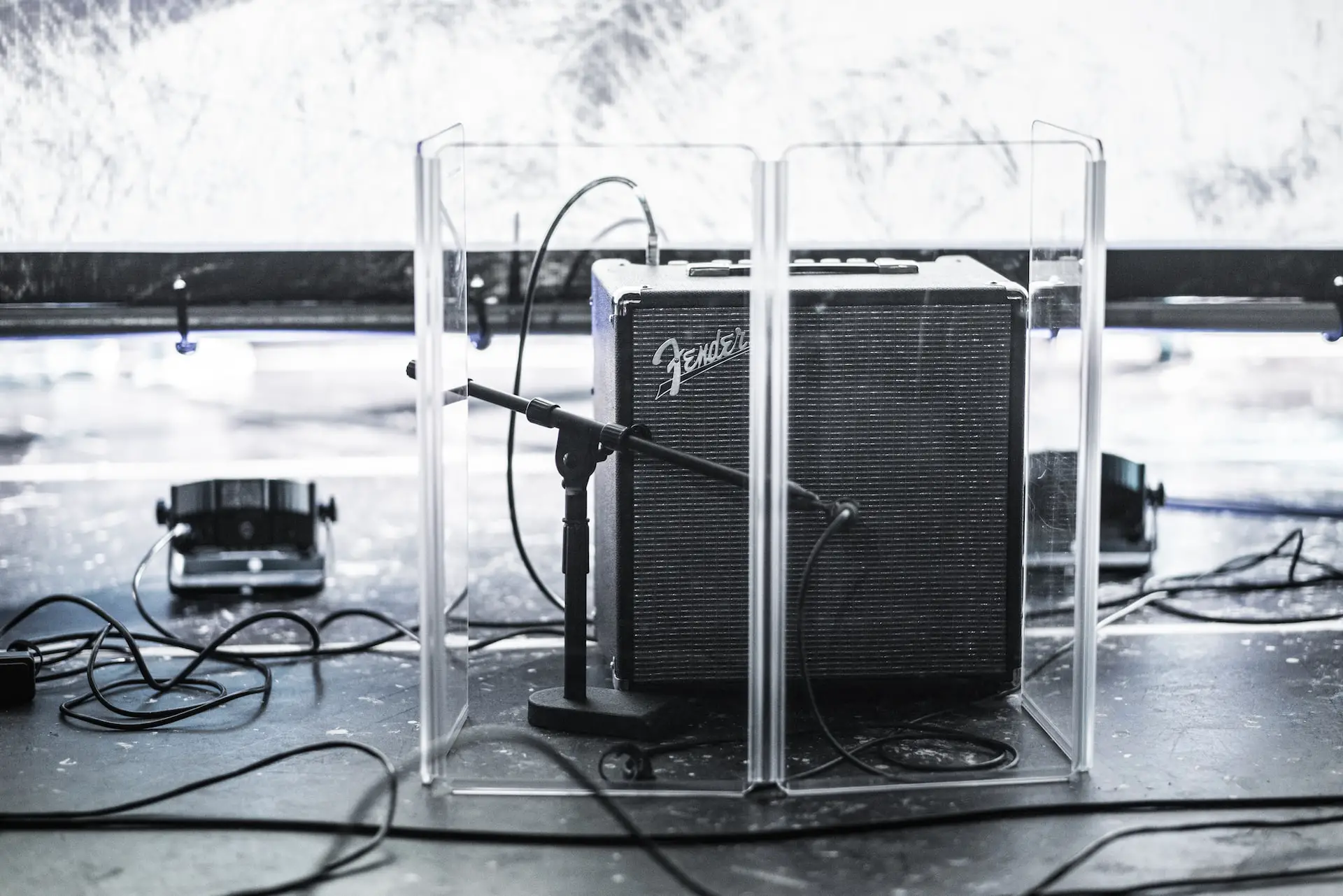There’s no denying the fact that higher gain is responsible for stronger signals, and ultimately stronger signals result in better distortion and cooler solos. Yet, low gain is considered better when it comes to sound quality as there’s less distortion (ironically).
High gain is blamed for producing unwanted distortion. For a low impedance amplifier, low gain is preferred, but for high bass, high gain does the work.
I did extensive research on this topic and found out that if you have a low sensitivity microphone for instance, you will have to have higher gain, as it will help the amplifier make the sound louder.
I also found out that higher noise levels are caused by higher gain when talking about low-impedance headphones. Most people consider that with low gains you have a wide range of volume. However, you can’t conduct concerts and festivals without using high gain.
Also Read: Is Audio Interface Better Than Amp: Differences & Sound Quality
What Is Gain?

Gain is when a device modifies the sound signals
Gain is when a device like an amp amplifies a sound signal to increase the strength and produce distorted effects or simply make the sound louder.
We’ve put some light on whether low gain is better or high in terms of the sound quality, but do you actually know what is gain? How does it work?
Many people get confused between gain and volume. However, they are two different terms. Volume is used to make the output sound louder, but gain is used to make the input tone louder, they are different. Gain is often used for improving the quality of the sound.
There was a time when people used analogs to improve the sound quality, but the conditions have changed in the past few decades.
Gain and volume go side by side, properly syncing them together is essential to attain good clear sound. Gain has a major effect on the volume of the sound system you are using.
High Gain vs Low Gain
| High Gain | Low Gain | |
| Volume | High Volume | Low Volume |
| Sound Quality | Lower quality with high chance of distortion | Better quality with low chance of distortion |
| Use Cases | Used for high bass and big concerts. | Used for things like IEMs as they have lower resistance. |
| Power Consumption | It has more power consumption. | Consumers have less power comparatively. |
| Recommended Settings | Gain: 7-8, Treble: 7, Mid: 3, Bass:7 | Gain 5-6, Treble: 6, Mid: 6,
Bass: 4-5 |
1. Volume: High Gain vs Low Gain
When the gain is high, the volume becomes higher, and when the gain is low, the volume is also lower.
When there’s a need for higher volume, high gain is taken into consideration. An increase in the gain will result in louder sound output. People often increase the gain of the amplifiers or speakers to check their limits.
If you are planning to boost the music and add more bass to it, then high gain can do it for you. However, if you want the volume to be moderate, then you can rely on low gain.
If you want low volume, don’t ever try getting it on high gain, as it will create unnumbered distortions.
2. Sound Quality: High Gain vs Low Gain
The sound quality of low gain is often regarded as much better as there’s less distortion. However, the sound quality also depends on the volume you are using.
Efficient speakers tend to give out better sound when used with low gain but if you want to boost the bass of the speakers, high gain is suitable.
Let’s consider that if you put high volume with low gain, you won’t be able to get the best quality sound. Same is the case when you have high gain and low volume, there will be distortion.
When you have low gain and high volume, eliminating channel imbalance is easier but with high gain, channel imbalance is prone to happen, which ultimately results in distorted sound.
3. Use Cases: High Gain vs Low Gain
If talking about the preamp, you need to use low gain as it is much better than high gain. Preamp is considered the finest for low frequencies, it is good for strengthening weak signals.
If you are willing to record loud tracks, it might be the best option for you as it works astonishingly in studio recording. However, if you want to record a quieter track, you can use high gain for the preamp.
Let’s consider you have a headphone amp, then you will have to use low gain to suppress the unwanted distortion of loud tracks.
Here, you need to keep in mind that it might be of low quality because low gain uses low voltage. Quieter sound tracks are finely recorded with high gain.
So, how does it affect the microphone? High gains are the perpetrators behind sensitive microphones, if you don’t want sensitive microphones, avoid high gain.
Yet, if you are aiming for more ambience in the sound, high gain is preferable. If you want to avoid the noise floor, low gain can do it for you, when using the microphone.
4. Power Consumption: High Gain vs Low Gain
Power consumption of high gains is more than low gain. As high gains are responsible for creating heavy tones even at lower volumes, they certainly acquire more power.
High gain is used for stronger duty, and it requires excessive power to amplify the signals. High gain is ahead of low gain in terms of power consumption.
5. Recommended Settings: High Gain vs Low Gain
Amp setting plays a pivotal role in overall usage of high gain and low gain. If you want to attain the sound you’re aiming for, you need to be good at setting up the amp.
Let’s suppose, you are trying to manage high gain settings or want metal sounds for instance. There are four main controls that you need to understand properly. Here are the settings you need to consider for.
High Gain settings
- Gain: 7-8. As you are aiming to get high bass content or scooped metal sound, you need to set the gain either 7 or 8. Right gain is important if you don’t want a muddy sound.
- Treble: 7. Treble frequencies are an important factor to consider if you are looking for content that is more-darker. The treble should be set at 7.
- Mid: 3. It is also one of the most important settings that music producers mess around with. For metallic sound, and high bass sound, you can set the mid at 3, they need to be a bit lower here.
- Bass: 7. As we have set high treble and gain, it is also suggested to keep high bass too. It can be set at 7 too. High gain and bass have a direct relationship. The higher the gain, the higher the bass.
Low Gain Settings
If you are looking for a nice clean sound. Here are the settings you need to make with low gain.
- Gain: 5-6. As we want sound with less bass and more clarity, we will be keeping the gain low at 5-6, to avoid any distortion.
- Treble: 6. In a low gain setting, you should also avoid too much treble, you can set it to 6 to get clear sound.
- Mid: 6. This will give you a nice clean tone to work with.
- Bass: 4-5. A nice, basic clean sound with a little extra shine.
Should Gain Be High or Low?

Low and high gain setup depends on the instrument
You should choose a high or low gain setup depending on your instruments and the music you are playing. If you want a heavy distorted sound, go for high gain. If you want a clear sound, go for low gain.
Gain is the ratio of how loud is the input signal before it enters an amplifier or a computer system. You just need to keep in mind that the higher the gain, the stronger and louder the signal.
Let’s take a simple example here. You are out for public speaking at an event in front of a huge crowd.
You have two options, either speak louder or increase the volume of the speaker you are using so everybody listens to you clearly.
If you are speaking low and the volume is raised to maximum, the audience won’t be able to hear you clearly, as the input would be inadequate.
Moreover, if you speak too loudly and the volume is down, you won’t be heard with clarity again. If you raise the gain to either high or low, you need to adjust other settings with them. Otherwise, you will end up creating a muddy sound, which won’t be pleasant.
What Happens if Your Amp Gain Is Too High?
If the input stage is flooded with too high a gain, the audio will start clipping. If you are aiming to get distortion in your sound, then this might be a good idea for you, but if you want a clear and smooth sound, too much high gain isn’t beneficial at all.
The use of gain totally depends on the scenario you are in. If you want a metallic sound or sound with more bass, a high gain can work for you, but setting it too high will create distortion in your sound. It is one of the main reasons people don’t mess a lot with gain.
What Happens if Your Amp Gain Is Too Low?

Amplifier can’t reach full power is gain is too low
It will be really tough for your amplifier to reach full power if the gain is set too low. The sound will be unclear and you won’t be able to hear any effects you may have on your amp or pedal.
Gain shouldn’t be too low or too high; it should be set at a moderate point, depending on the use. Avoid setting it too low.
How To Know If Your Amp Gain Is Too High?
When the amp gain is set too high, music becomes highly distorted, even if you are playing it on a low volume level.
If you are getting distortion even at low or medium volume levels, it clearly means that the input signals are louder and the gain is high. Sometimes, your amp gain is set too high, and you are unaware of it.
It’s because most people are not aware of the symptoms that take place when the amp gain is too high. Always remember, when the amp gain is too low, you will hear the “Hiss’’ sound in the background, and when it’s too high, you will have distorted sound.
Also Read: Lows Vs Mids Vs Highs In Music: The Meaning & Usage





